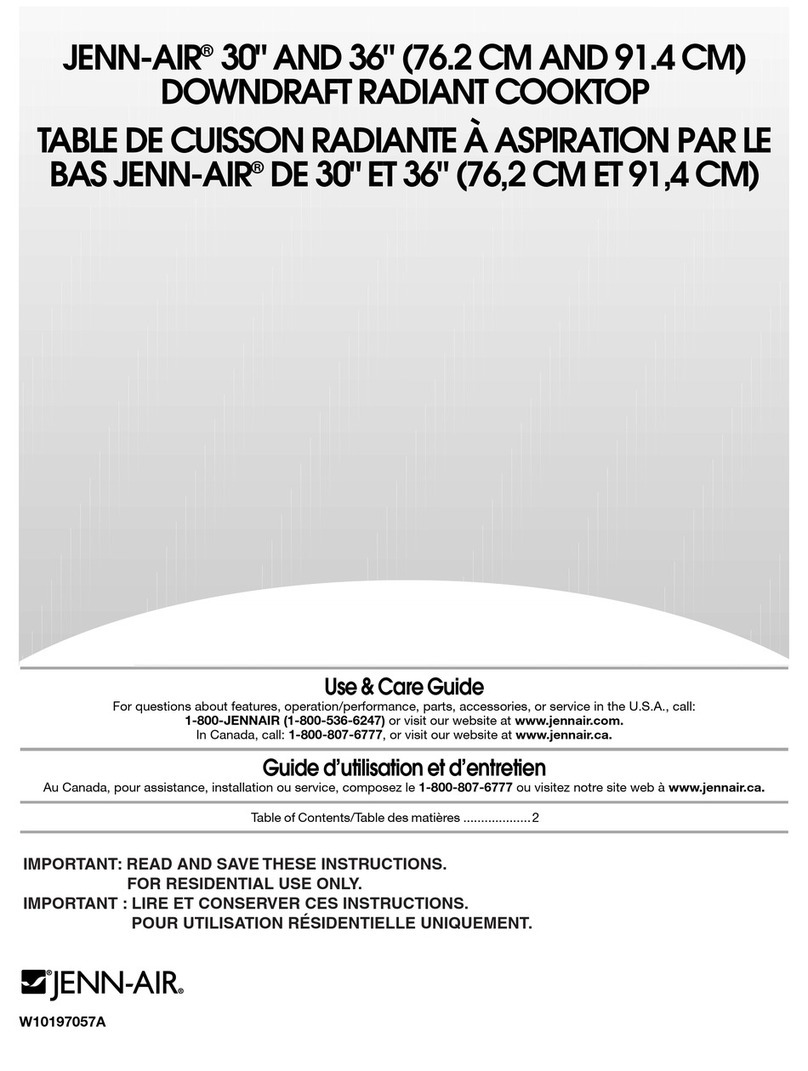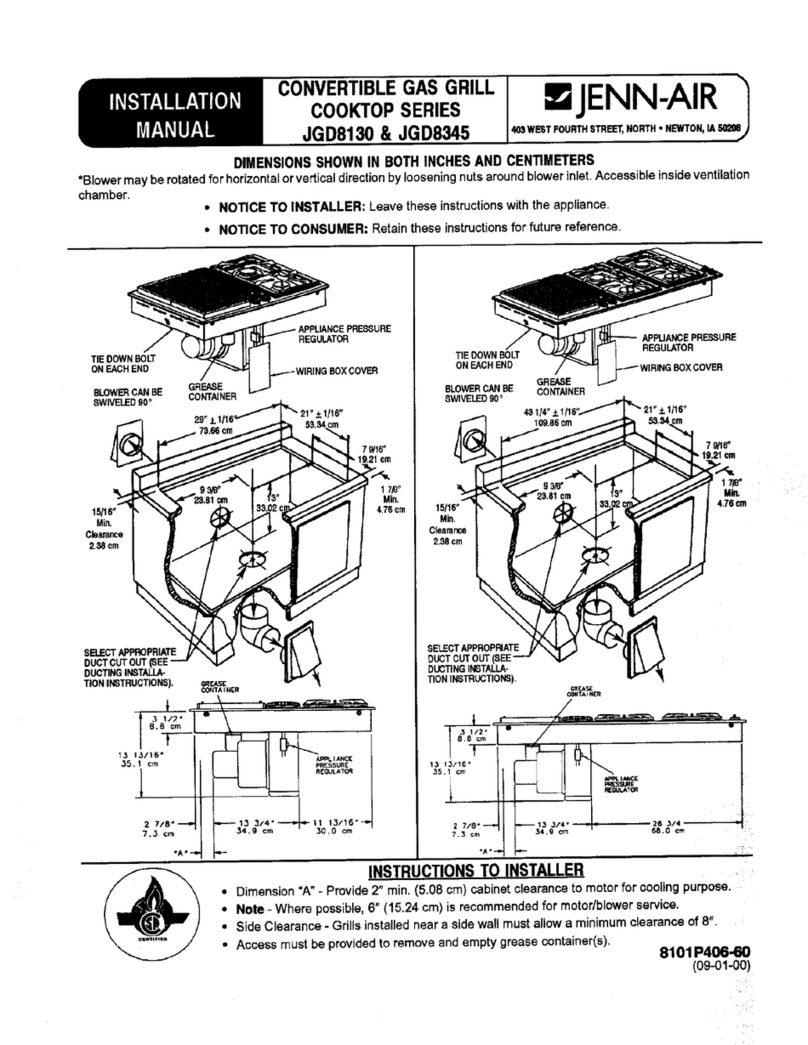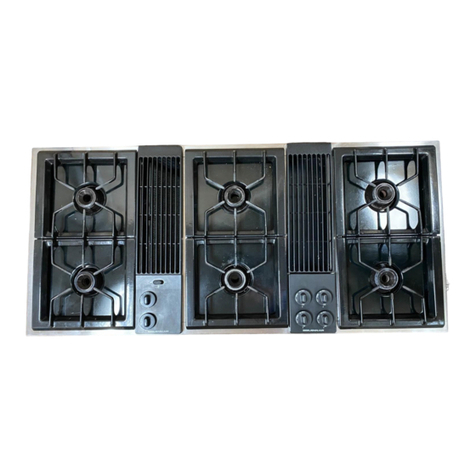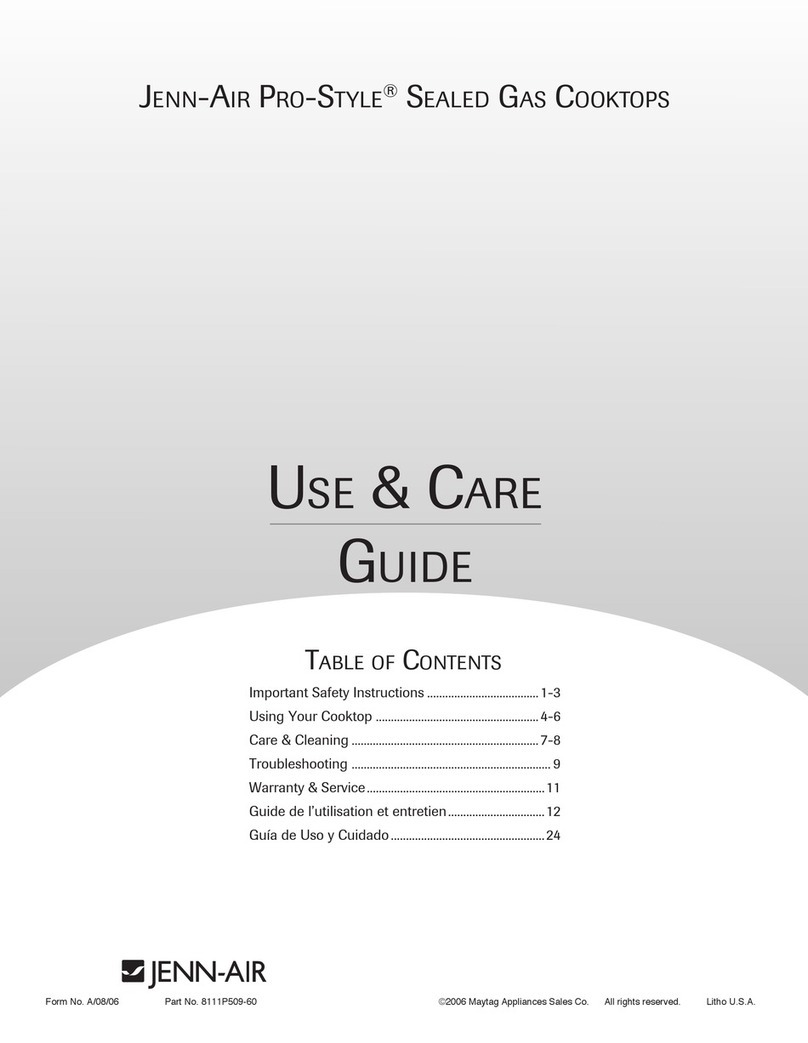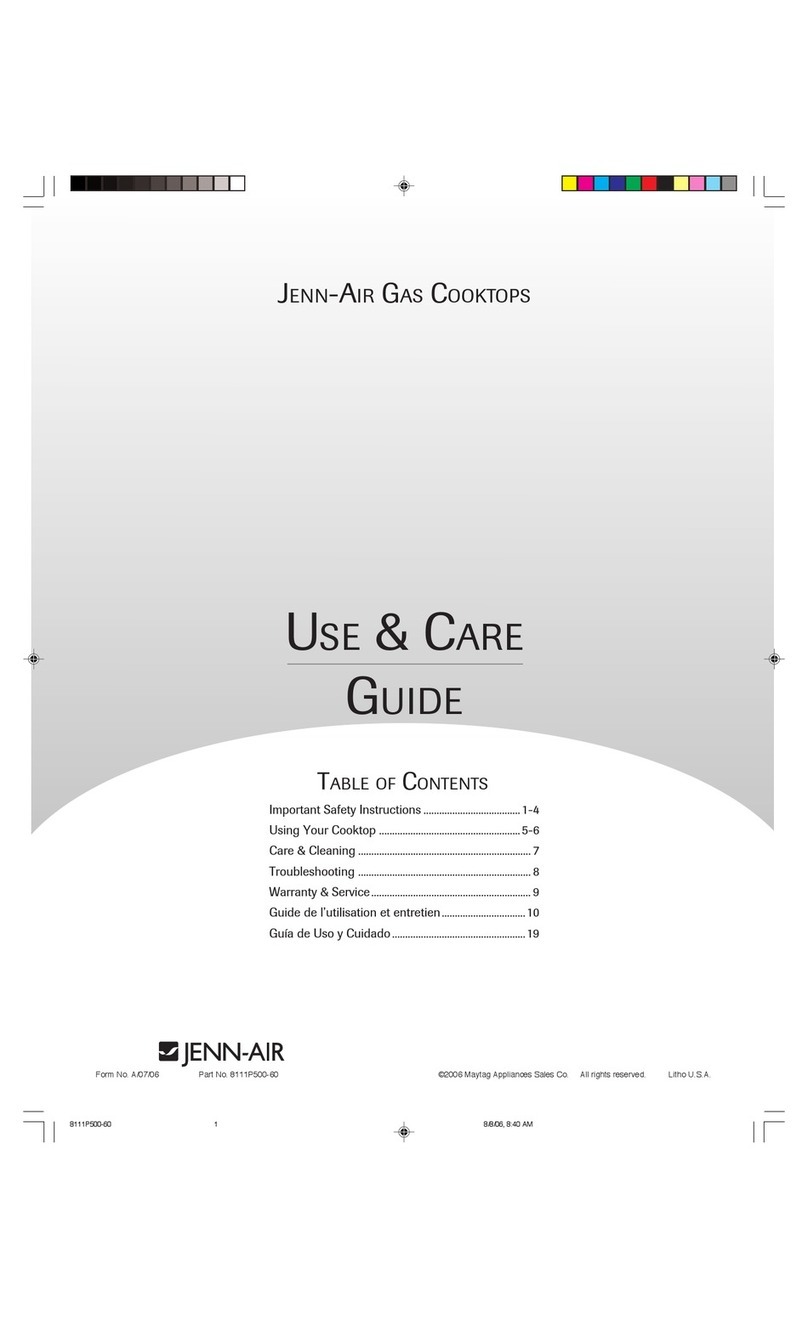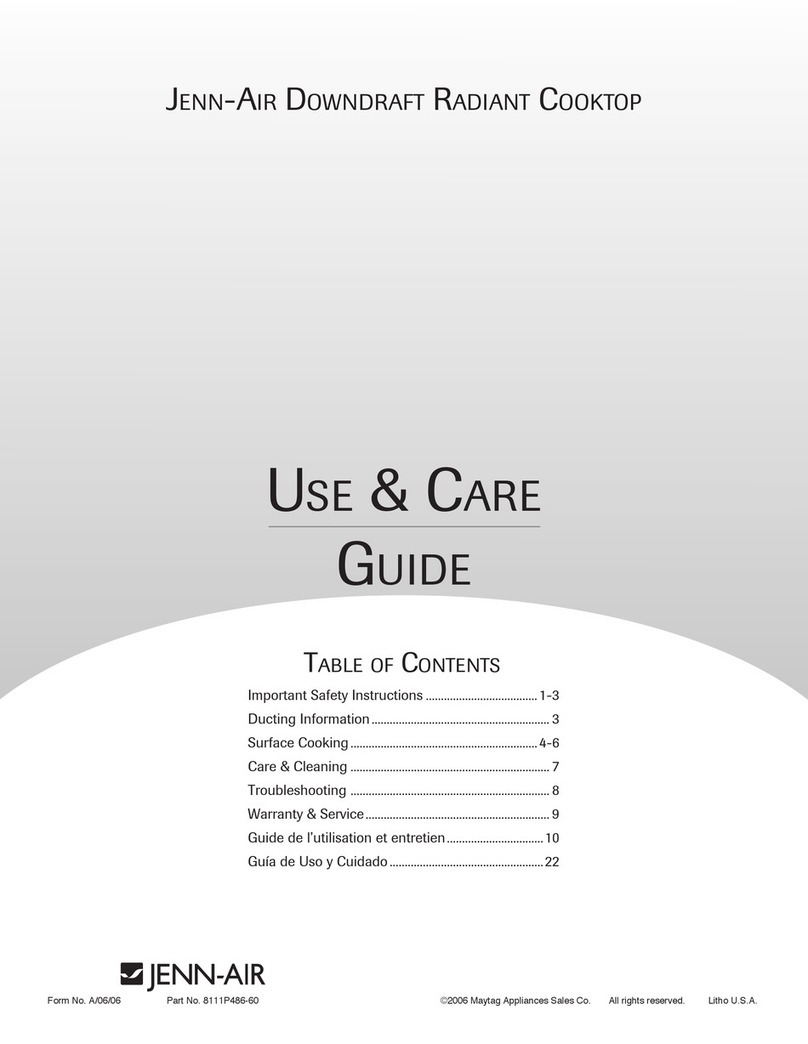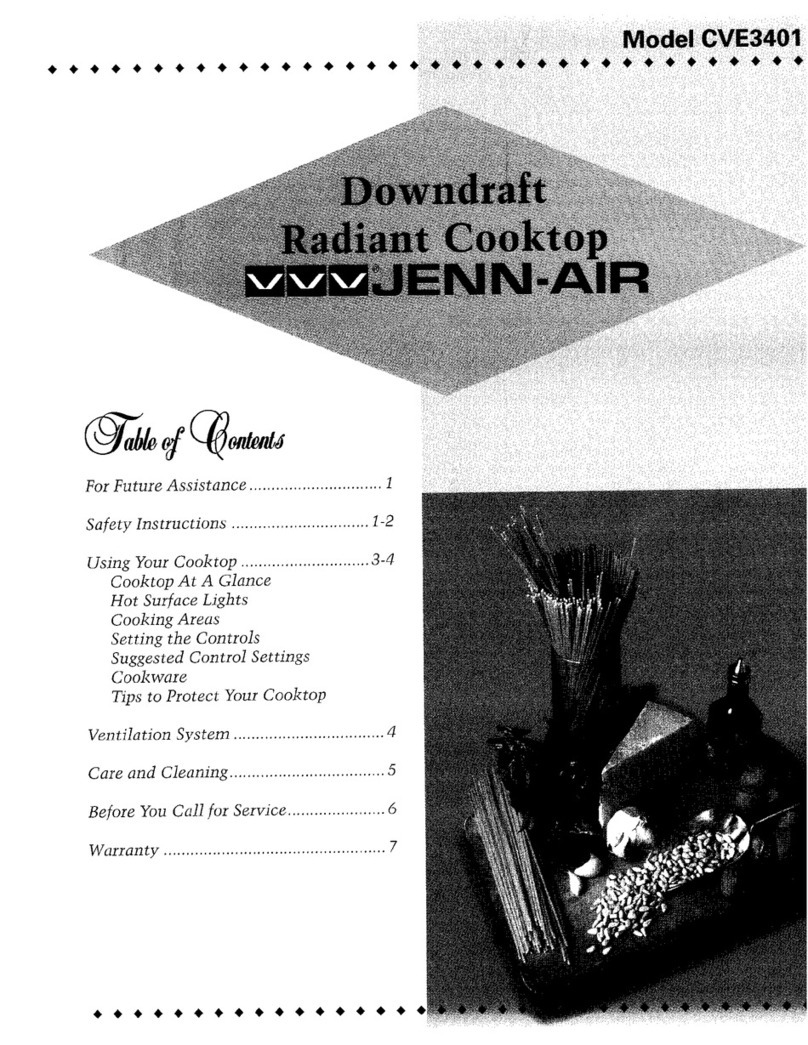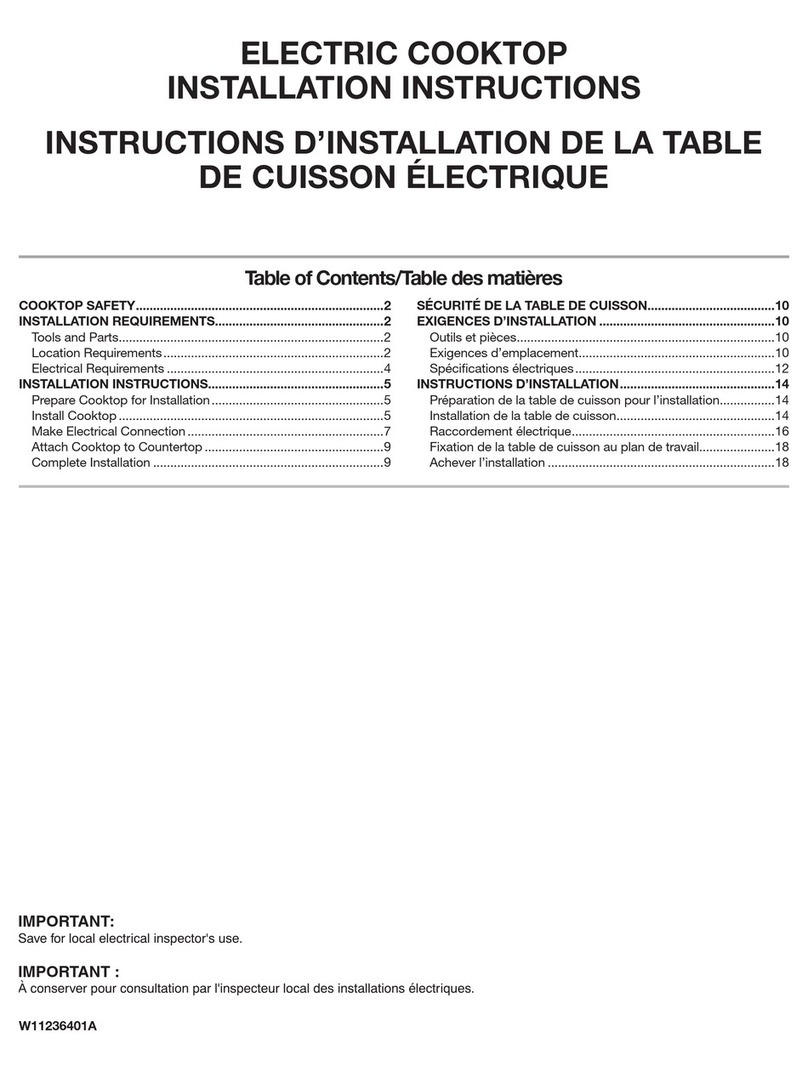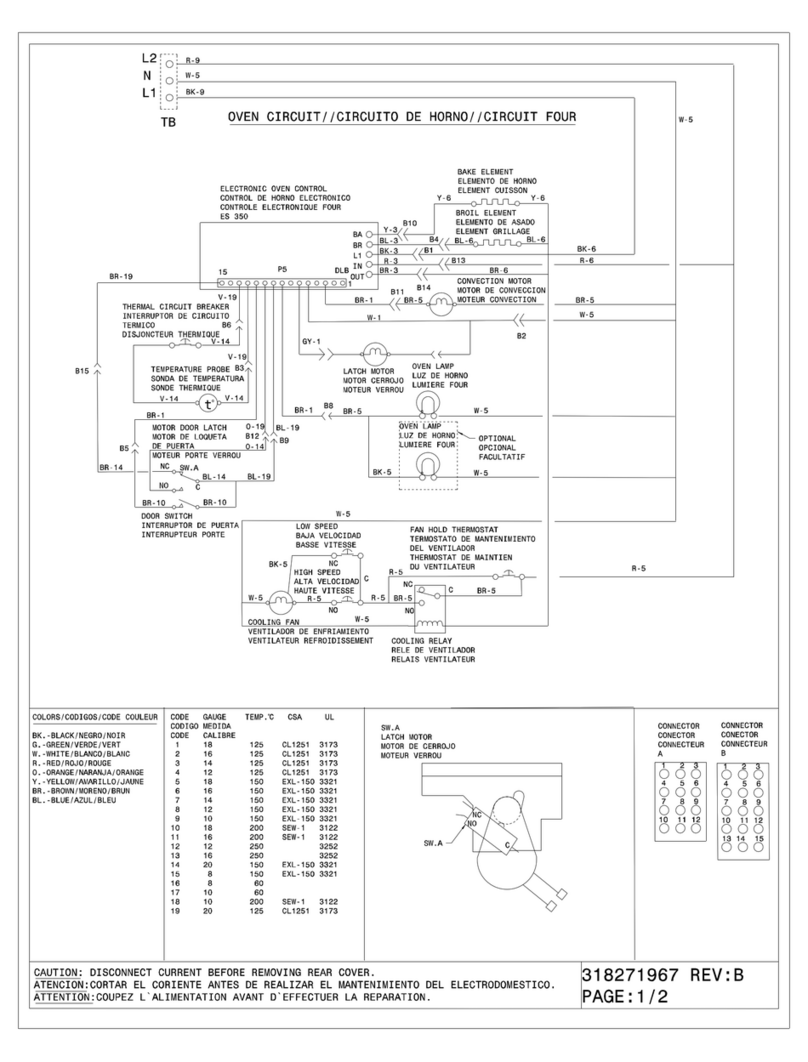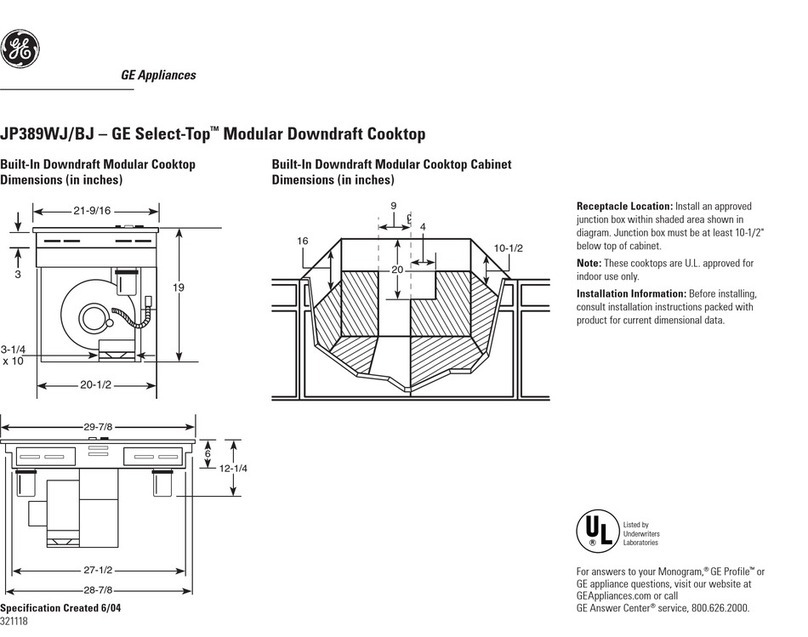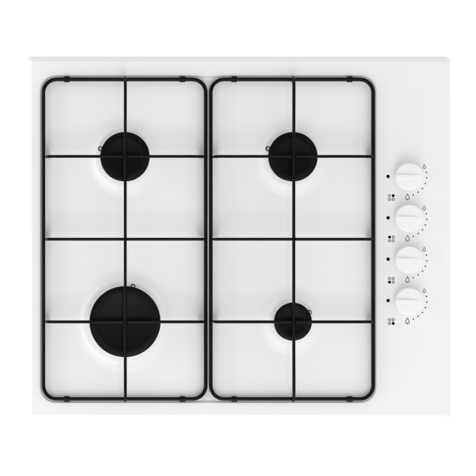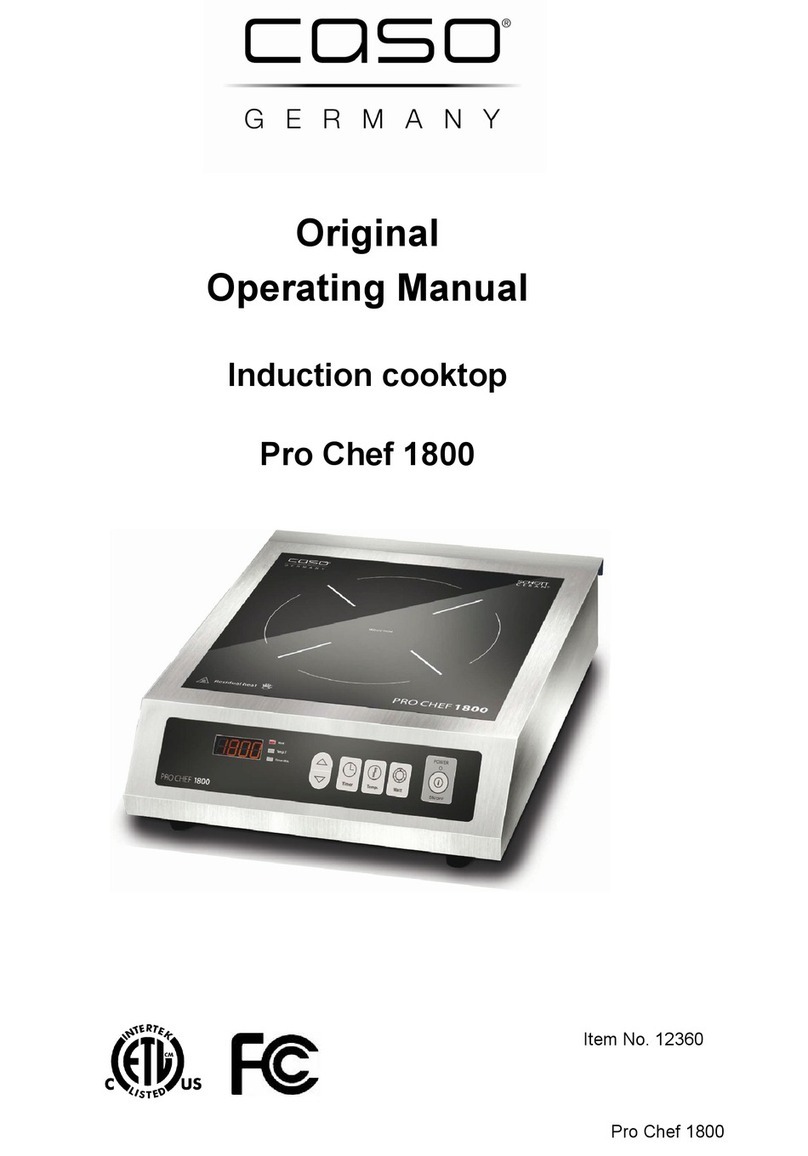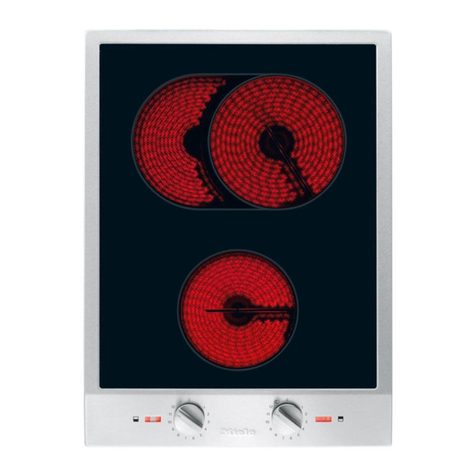
2
To eliminate the hazard of reaching over
hot surface burners, cabinet storage
should not be provided directly above a
unit. If storage is provided, it should be
limitedtoitemswhichareusedinfrequently
and which are safely stored in an area
subjected to heat from an appliance.
Temperatures may be unsafe for some
items, such as volatile liquids, cleaners or
aerosol sprays.
A faint gas odor may indicate a gas leak.
If a gas odor is detected, shut off gas
supplyto thecooktop. Callyour installeror
local gas company to have the possible
leak checked. Never use a match or
other flame to locate a gas leak.
INCASE OF FIRE
Turn off appliance and ventilating hood to
avoidspreadingtheflame.Extinguishflame
then turn on hood to remove smoke and
odor.
•Smother fire or flame in a pan with a lid
or cookie sheet.
NEVER pick up or move a flaming pan.
Do not use water on grease fires. Use
baking soda, a dry chemical or foam-type
extinguisher to smother fire or flame.
CHILD SAFETY
NEVER leave children alone or
unsupervised near the appliance when it
is in use or is still hot.
NEVER allow children to sit or stand on
any part of the appliance as they could be
injured or burned.
Childrenmustbe taughtthatthe appliance
and utensils on it can be hot. Let hot
utensils cool in a safe place, out of reach
ofsmallchildren.Childrenshouldbetaught
that an appliance is not a toy. Children
shouldnot beallowed to playwith controls
or other parts of the unit.
CAUTION: NEVER store items of interest
tochildren in cabinetsabove anappliance.
Children climbing on the appliance to
reach items could be seriously injured.
ABOUT YOUR
APPLIANCE
NEVER use appliance as a space heater
toheator warmaroom topreventpotential
hazard to the user and damage to the
appliance. Also, do not use the cooktop as
astorage areafor food orcooking utensils.
Do not obstruct the flow of combustion
and ventilation air by blocking the air
intakes.Restriction of airflowto theburner
prevents proper performance and
increases carbon monoxide emission to
unsafe levels.
Potentially hot surfaces include cooktop
and areas facing the cooktop.
COOKING SAFETY
Always place a pan on a surface burner
before turning it on. Be sure you know
whichknobcontrols whichsurfaceburner.
Make sure the correct burner is turned on
and that the burner has ignited. When
cooking is completed, turn burner off
before removing pan to prevent exposure
to burner flame.
Always adjust surface burner flame so
that it does not extend beyond the bottom
edge of the pan. An excessive flame is
hazardous, wastes energy and may
damage the appliance, pan or cabinets
above the appliance.
NEVER leave a surface cooking operation
unattended especially when using a high
heat setting or when deep fat frying.
Boilovers cause smoking and greasy
spillovers may ignite. Clean up greasy
spills as soon as possible. Do not use high
heat for extended cooking operations.
NEVER heat an unopened container on
thesurface burner.Pressure build-upmay
causecontainertoburstresultinginserious
personalinjuryordamageto theappliance.
Use dry, sturdy potholders. Damp pot-
holders may cause burns from steam.
Dishtowels or other substitutes should
never be used as potholders because they
can trail across hot surface burners and
ignite or get caught on appliance parts.
Always let quantities of hot fat used for
deep fat frying cool before attempting to
move or handle.
Do not let cooking grease or other
flammablematerialsaccumulate inornear
the cooktop. Clean frequently to prevent
grease from accumulating.
NEVERweargarmentsmade of flammable
material or loose fitting or long-sleeved
apparelwhile cooking. Clothingmayignite
or catch utensil handles.
Do not use aluminum foil to line burner
basin. Restriction of normal air flow may
result in unsafe operation.
UTENSIL SAFETY
Use pans with flat bottoms and handles
thatare easilygrasped and staycool. Avoid
using unstable, warped, easily tipped or
loose-handledpans.Alsoavoid usingpans,
especially small pans, with heavy handles
as they could be unstable and easily tip.
Pans that are heavy to move when filled
with food may also be hazardous.
Be sure utensil is large enough to properly
contain food and avoid boilovers. Pan size
is particularly important in deep fat frying.
Be sure pan will accommodate the volume
of food that is to be added as well as the
bubble action of fat.
To minimize burns, ignition of flammable
materials and spillage due to uninten-
tional contact with the utensil, do not
extendhandlesoveradjacentsurfaceburn-
ers. Always turn pan handles toward the
side or back of the appliance, not out into
the room where they are easily hit or
reached by small children.
Never let a pan boil dry as this could
damage the utensil and the appliance.
Only certain types of glass, glass/ceramic,
ceramic or glazed utensils are suitable for
cooktop usage without breaking due to
the sudden change in temperature. Follow
manufacturer’s instructions when using
glass.
8111P488-60 5/25/06, 9:54 AM3



